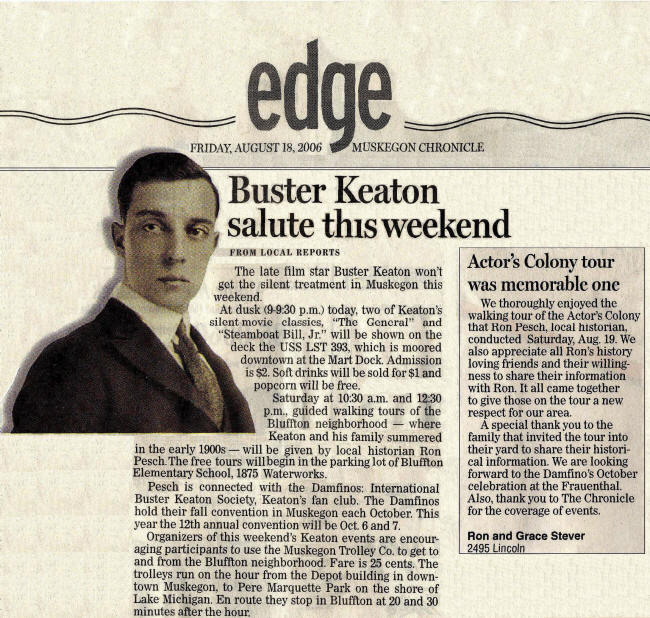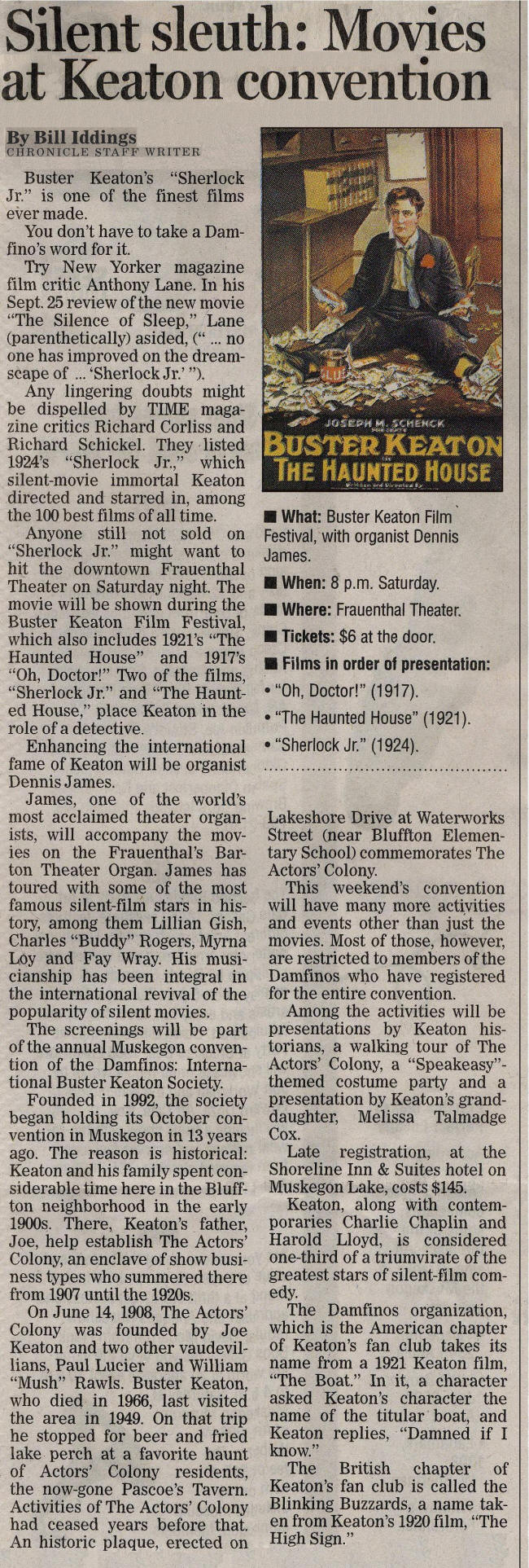|
Every autumn for the last dozen years,
a small group of dedicated silent film fans from across the U.S.
has quietly convened at Bluffton, a piece of scenic peninsula
between Muskegon Lake and Lake
Michigan
in the west
Michigan
town of Muskegon.
They do so because another group of devoted entertainment types
made history by making Bluffton their summer home about a
century ago. Among them was a young vaudevillian soon to become
a pioneering actor/director in the newborn Hollywood film
industry. His name was
Buster
Keaton.
“The property is still there, but the old summer home was torn
down. It was on a steep hill with sand dunes overlooking the
water. The retaining wall is the only thing still there,” says
Buster
Keaton Society Founder
Patricia Eliot Tobias of the Actors Colony founded at Bluffton
by Keaton’s parents.
Buster
Keaton (1895-1966) and his
parents, Joe and Myra, comprised a popular comedy trio known on
the vaudeville circuit as The Three Keatons. In their travels
they came to Muskegon, fell in love with it, and established a
home where their fellow performers could cool their heels during
the warm-weather months, when audiences stayed away from
non-air-conditioned theaters. “Buster was still a boy when he
came to Muskegon in 1908. It was the first permanent home he
ever had,” says Tobias, a Los Angeles-based writer/editor. “He
adored Muskegon because it was his only chance to be a regular
kid. His mom learned to cook there. He started a baseball team
to play the town kids, and did acrobatics while running the
bases. It made the local paper.”
Keaton
even made affectionate notations about Muskegon in a date book
he kept during those years. “That’s why we meet there. We love
coming to the town he cared about so much,” says Tobias.
Keaton
stopped spending summers at Bluffton when he moved to Hollywood
for a full-time film career. He went on to direct and/or star in
seminal silent comedies including “The Navigator” and “Sherlock
Jr.” (both 1924), “The General” (1926), “The Cameraman” and
“Steamboat Bill Jr.” (both 1928). He made over 100 films,
working into the 1960s.
Lest they be considered “those weirdos who come in once a year,”
the society has embraced the locals by opening their film
screenings, expert chats and other events to the public. On the
agenda this year is a one-inning baseball game played on the
field where young
Keaton
romped and a speakeasy-style party to celebrate the era of
Keaton’s greatest work.
So, why does a far-flung group of educated folk including
doctors, lawyers and an archaeologist, chase the shadow of a
long-gone silent film star? Tobias says
Keaton
labored in the shadow of Charlie Chaplin in the 1920s but is now
considered a peer of Chaplin and another innovator, Harold
Lloyd.
“And there’s something very cerebral about Keaton’s work. His
gags are clever. They appeal to the mind and the funny bone,”
says Tobias. “People think of him primarily as a comedian, but
he was an extraordinary filmmaker who influenced everyone.
Anyone in films who employs physical action owes a debt to
Keaton.”
|

